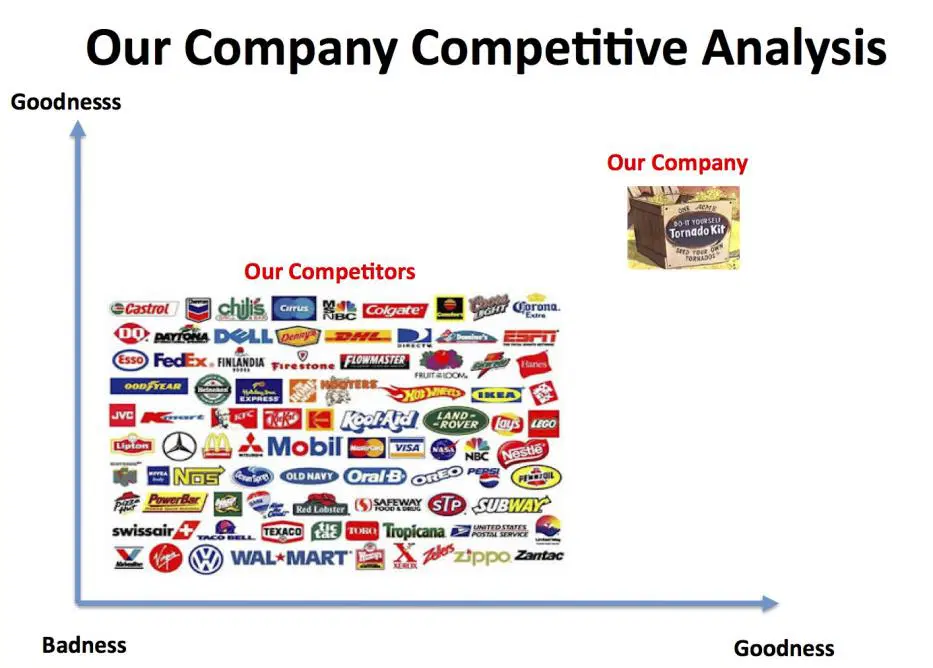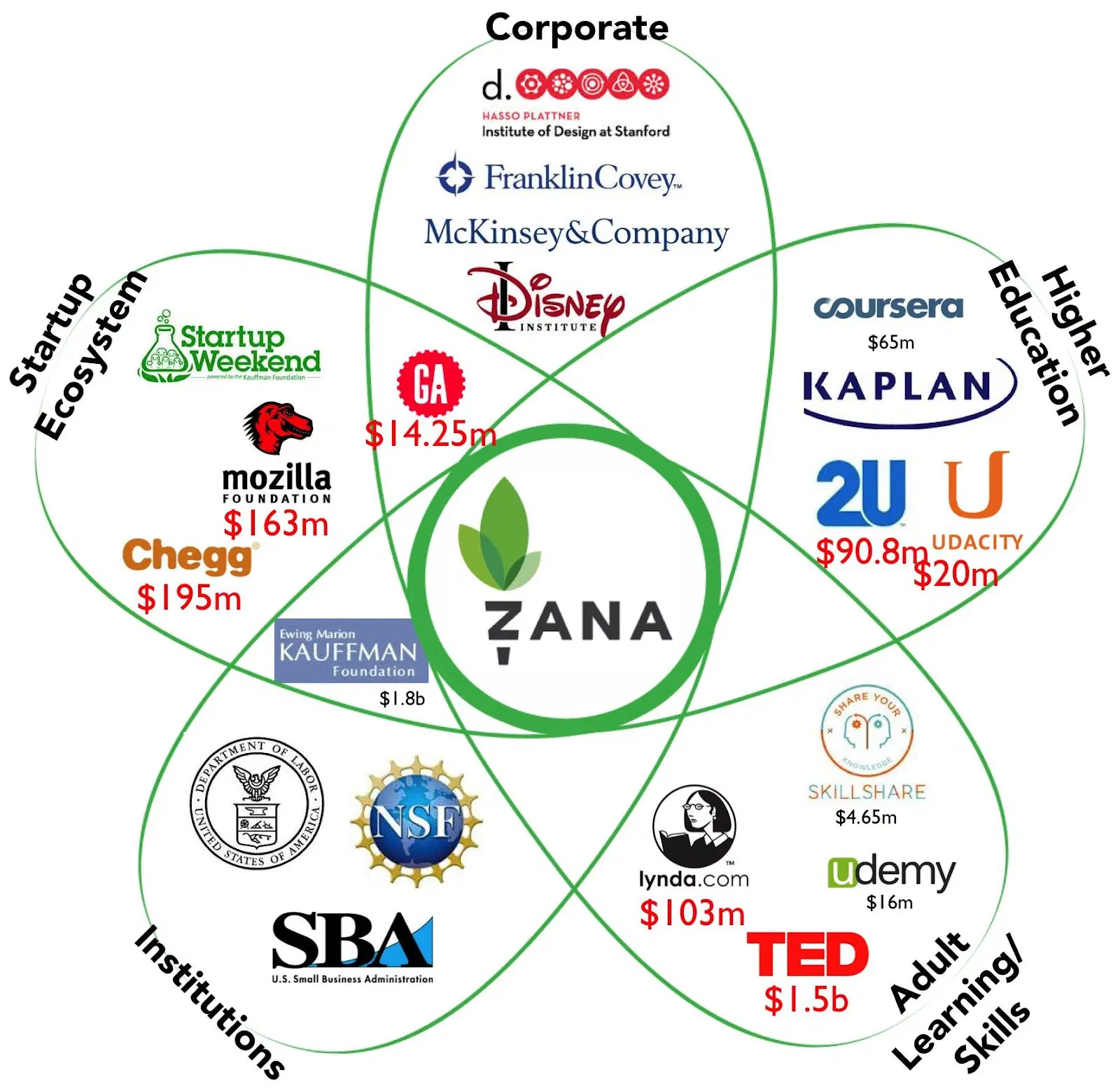Learn how to create a competitive analysis, the most important piece of research you need to do before building a product.
What is a competitive analysis?
Competitive analysis is the most important piece of research you need to do before building a product. To compete against existing products in the market, you need to learn as much as you can about their strengths and weaknesses.
The product manager is often responsible for this research, but every team member benefits from knowing the product strategy.
Benefits for creating a competitive analysis include:
- Having an intimate knowledge of your competitors’ product strategy
- Being flexible as the market changes
- Learning how best to position your product in the marketplace
How to do a competitive analysis
It’s important to stay organized while preparing a competitive analysis. Here’s a step by step walkthrough of how it might go:
Step 1: Identify competitors in the space
To identify your competitors, you’ll need a good idea of what market you fit into. Identify your target audience, and you’ll find out which companies are competing for your target users’ attention. Are you building an e-commerce product? You’ll have to consider not only Amazon, but also sites like Etsy that sell niche products.
Some competitors directly compete with your product, because they fit into the same market as you do. Some companies might serve a different functionality and are better suited to be your partners. For example, you could build an e-commerce platform and use e-commerce recommendation engines as partners.
To visually organize the competitors, you can start a table, like the one below:

Step 2: Identify important features that differentiate each competitor
The best way to do this is to use each product and get to know them well. It’s important to gain a perspective of the product from the user’s point of view. If it’s a mobile game, download and play it many times. If it’s an e-commerce project, go through the experience of shopping for and checking out an item. If it’s a B2B product, sign up for a demonstration.
Some features to think about might be pricing, social media presence, and onboarding.
- Onboarding and usability: Spend some time evaluating the ease of the signup process. Do they take you through many steps while signing up, or is it a seamless experience? If it’s a developer-facing product, how many lines of code are required in order for the product to start working? It’s also worth taking a look at their documentation to determine if their how-to guide makes sense.
- Pricing: Think about their pricing structure. Is it a monthly subscription, or is it based on number of customer interactions? Do they set the price low to attract customers, or do they set it higher to imply a high-quality product? How are their pricing tiers organized?
- Social media presence: Do they have a Twitter or Instagram account? How often are they posting? Do they update their blog regularly?
By this time, you should have a good idea of what differentiates products from each other and what their strengths and weaknesses are. You can add these insights to the chart.
Here’s what your analysis might look like after this step:

Step 3: Compare your product to the others in the market.
Now it’s time to factor in the strengths and weaknesses of your own product. If the product is at its beginning stages, you can write out the proposed features and update the table as your product evolves.

Step 4: Identify areas in which you can improve your product
Now that you have a glimpse of how your product compares to competitors, you can identify areas in which your product can improve, or any features you’ll need to compete. You could do this by adding it to the table or to a backlog.
For example:
- Social Media presence: Look into hiring writers to start a regular blog.
- Onboarding experience: Investigate with designers and developers on how to reduce the number of steps required for sign-up/code integration.
Step 5: Continue to update the competitive analysis as the product develops
It’s important to continue to reevaluate the product as the market keeps changing. This means continuing to stay in touch with users, whether it’s creating personas or conducting usability tests. You should also keep using your competitors’ products and note any updates they are making.
If your competitors are using a new social media platform to reach your target audience, consider adopting a marketing strategy focused on that platform.
Step 6: Package the competitive analysis
So now that you have the competitive analysis, how do you make it digestible for a general audience? Many startups include a brief visualization of how their company compares to others in the same market. Do make sure to be realistic, as many venture capitalists have seen this chart in some format or another:


A better visualization method is to show how competitors in your space balance the most important features of your product.
For example, the following diagram compares web messaging platforms on a scale of “messaging experience” vs “business/consumer focus.” This shows the quality of each service, and the types of audience each one prioritizes.
Petal Diagram
Instead of drawing a graph, you could also use a petal diagram. This shows where your product fits in the market, especially if you want to highlight different elements or target a niche segment of users.

Where to use the competitive analysis
- Pitch decks: If you’re the head of a startup company, include the competitive analysis research in your slideshow. Investors want to see that you have been doing research and know what it will take for your product to succeed in the market.
- Marketing materials: Use the data you’ve gathered from the competitive analysis in your marketing strategy, such as writing taglines. Now that you know how your strengths align with the competition’s weaknesses, you can use those to your advantage.
- Team meetings: Bring up the research during meetings to give your development team clear reasons behind your product design choices.
Now you have a breakdown of how to do competitive analysis and where to use it.
You’ll be able to get a clear picture of the market, respond to changing circumstances, and create a data-driven strategy for your product.
Get in front of the competition with visual communication. Try Zight (formerly CloudApp) for free.
